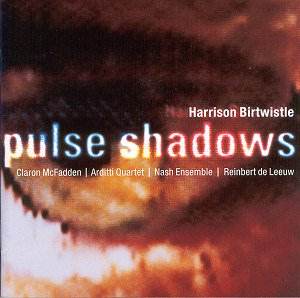 Composer: William Primrose, Henri Casadesus, Wolfgang Amadeus Mozart, Johannes Brahms
Composer: William Primrose, Henri Casadesus, Wolfgang Amadeus Mozart, Johannes Brahms
Works: Casadesus: Concerto in B Minor; Mozart: Sinfonia Concertante; Brahms: Sonata No. 2 in E Flat Major
Performers: William Primrose (viola), Albert Spalding (violin), Chamber Orchestra conducted by Walter Goehr (Casadesus only), New Friends of Music Orchestra conducted by Fritz Stiedry (Mozart only), Gerald Moore (piano; Brahms only)
Recording: Recorded between 1937 and 1941
Label: Pearl GEMM CD 9045
William Primrose stands as a pivotal figure in the 20th-century viola repertoire, his artistry bridging the gap between the early 20th century’s romantic ideals and the burgeoning modernist movement. This recording features three works that showcase both his technical prowess and interpretative depth: Casadesus’s Concerto in B Minor, Mozart’s Sinfonia Concertante, and Brahms’s Sonata No. 2 in E Flat Major. Each piece sheds light on different facets of Primrose’s musicality, allowing for a vivid exploration of his development as an artist during his early years with the NBC Symphony Orchestra.
The Concerto by Henri Casadesus, once misattributed to Handel, is a light-hearted work that serves as an engaging entrée into the disc. Primrose’s articulation shines through in the buoyant Allegro, complemented by Goehr’s deft handling of the orchestral textures, particularly the woodwinds, which add a delightful underpinning to the solo lines. The Andante, while charming, reveals some limitations in the recording quality, as a persistent scratch mars the listening experience. Nevertheless, Primrose’s nuanced phrasing and clever interplay with Spalding’s violin are rewarding, though one might wish for a bit more vigor in the finale, which feels somewhat restrained compared to the exuberance expected of the marking “Allegro molto energico.”
Mozart’s Sinfonia Concertante is a high point of the recording, and this performance, conducted by Fritz Stiedry, is notable for its fluidity and charm. Primrose and Spalding engage in a spirited dialogue, their exchanges marked by both technical finesse and interpretative insight. The cadenza, particularly well-executed, showcases Primrose’s ability to balance lyrical beauty with virtuosic demands. However, the recording suffers from audible surface noise, and a jarring side join at 8:42 disrupts the flow of the first movement, detracting from its overall impact. Comparison to earlier recordings, such as those by Tertis and Sammons, reveals a different approach; while their interpretations possess a certain gravitas, Primrose and Spalding offer a more streamlined and lively rendition, albeit lacking the emotional depth that characterized their predecessors’ performances.
The Brahms Sonata, recorded with Gerald Moore, stands out as the most accomplished of the three offerings. This performance captures the essence of Brahms’ lyrical and structural complexities, with Primrose’s tonal shading particularly effective in the Andante con moto. The partnership with Moore is exemplary; their interplay is marked by a sympathetic understanding that brings an affectionate warmth to the music. Here, Primrose displays a greater maturity, with his choices of tempo and dynamics enhancing the overall expressiveness of the piece. This recording arguably surpasses Primrose’s later collaborations, which, while technically proficient, often lack the same level of emotional engagement.
This collection serves as a valuable document of Primrose’s early artistry and offers a compelling look at works that span a range of moods and techniques. While the sound quality presents some challenges, particularly in the Mozart and Casadesus, the interpretative insights and technical achievements of Primrose and his collaborators shine through. Each performance reveals both the strengths and limitations of the period’s recording technology, yet they collectively affirm Primrose’s legacy as one of the leading violists of his time, deserving of both recognition and deeper exploration.



